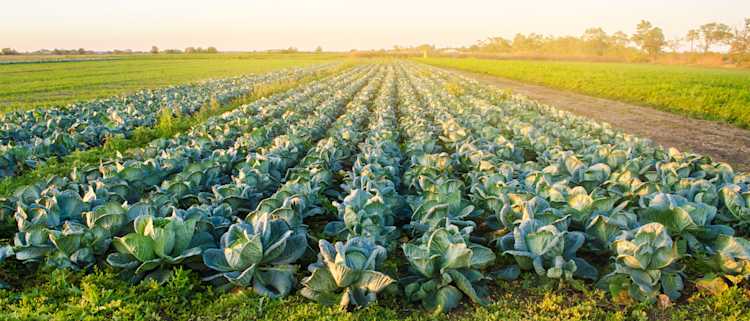We’ve all heard the advice to ‘eat local’ to help the planet before, even directly from the United Nations. But how true is this?
Though transport does produce carbon emissions, the advice to ‘eat local’ is a slightly misguided piece of advice, which masks a more important point: the type of food that we eat. When thinking about where we get our food from, an important first question to ask is:
How much does transport contribute to the total emissions in food production?
The answer (spoiler) is that transport only contributes a small amount to the total greenhouse gas emissions of food production.
Instead, what you eat is far more important than where your food travelled from.
The visualisation below shows the breakdown of greenhouse gas emissions from the production of different types of food.

As you can see in the data above, beef and lamb have the largest carbon footprints per kilogram of food produced, followed by dairy and other meats, with plant-based foods generally having the lowest footprint by far. For example, per kilogram, nuts have a footprint 200 times less than that of beef, and that’s not even taking into account the fact that nuts are more calorie-dense, meaning they pack in more calories per kg!
In fact, per calorie, nuts produce 450 times less greenhouse gas emissions than beef!

Land use and farm-stage emissions make up the vast majority of the carbon footprint of most foods, with transport only contributing a tiny fraction of the total emissions. Combined, land use and farm-stage emissions account for more than 80% of the carbon footprint for most foods, while transport emissions account for less than 10%. In beef production, transport is only responsible for 0.5% for the total emissions.
To wrap it up
Although more miles does mean more carbon emissions, when trying to reduce our food carbon footprint the first focus should be on what we eat rather than where the food travelled from. Eating plant-based foods has a tiny fraction of the carbon footprint of most animal-based foods, with beef and lamb having by far the largest footprint.
Transport typically accounts for less than 1% of beef’s GHG emissions: meaning that choosing to eat local has very minimal effects on its total footprint. Whether they are grown locally or shipped from the other side of the world matters very little for total emissions.
So, if you’re trying to reduce your carbon footprint, the best first step is to eat more plants!
For more detail on the information in this article check out the source data or feel free to drop us any further questions at hello@planty.uk! Also if you’re interested in delicious food, check out our plant-based ready-meal range at planty.uk.

















